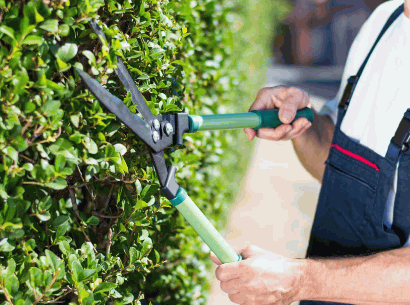In this comprehensive guide, we will delve into the world of wood fences, exploring everything from the various types of wood used to the benefits of choosing this classic fencing option. Whether you’re considering installing a wood fence on your property or simply want to learn more about the maintenance and care involved, this article will provide you with all the essential information you need.
We will also walk you through the step-by-step process of installing a wood fence, covering key considerations and practical tips to ensure a successful and durable installation. So, let’s begin our exploration of wood fences and discover the timeless appeal and practical advantages they offer.
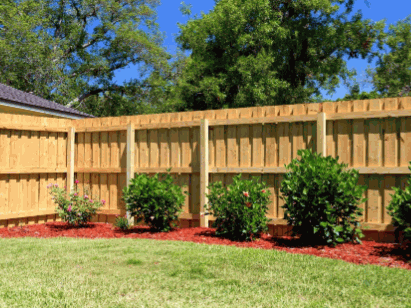
What Is A Wood Fence?
Wood fences serve as essential elements in property boundaries, providing a multitude of functional and aesthetic benefits.
Their natural appeal and versatility make them a popular choice for homeowners seeking to define their outdoor spaces. Wood fences offer privacy and security, creating a serene environment free from outside disturbances. Their design flexibility allows for various styles and customization options, complementing the architectural aesthetics of the property. The installation of wood fences requires careful planning, consideration of the landscape, and quality materials to ensure durability and longevity.
Find out more: How To Install Semi Frameless Glass Pool Fencing
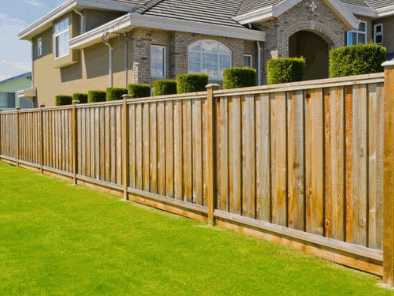
What Are The Types Of Wood Fences?
Wood fences come in various types, each with distinct characteristics and suitability for different applications. The different types include cedar, redwood, spruce, pine, and fir wood fences, each offering unique features and aesthetic qualities.
Cedar Wood Fence
A cedar wood fence is known for its natural resistance to decay and insects, making it a durable and low-maintenance fencing option. Cedar’s distinct grains and color variations make it an attractive choice for outdoor fencing projects.
It is also valued for its aromatic scent and the ability to complement various architectural styles. When used as a fencing material, cedar provides excellent insulation and noise reduction. Cedar wood is easy to work with, allowing for intricate designs and customization.
To preserve the natural beauty and longevity of cedar fences, staining or treating them is essential. This process not only enhances the visual appeal but also protects the wood from weathering, moisture, and UV rays.
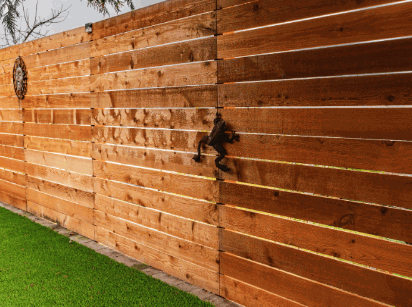
Redwood Wood Fence
A redwood wood fence is renowned for its natural beauty, strength, and resistance to decay, making it an excellent choice for durable and visually appealing fence construction. Proper care and maintenance are essential to preserve the rich color and texture of redwood fences over time.
This type of wood possesses natural oils that act as a preservative, enhancing its resistance to insects and decay. The straight grain and minimal shrinkage of redwood make it an ideal material for building fences that can withstand the elements. To maintain its luster, periodic cleaning and sealing are recommended. Regular inspections for signs of wear or damage, such as warping or loose boards, are important to address any issues promptly and extend the longevity of a redwood fence.
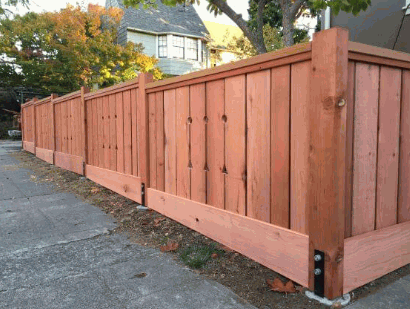
Spruce Wood Fence
A spruce wood fence offers a budget-friendly yet visually appealing option for various fencing projects. Proper sealing of spruce fences is crucial to enhance their durability and protect them from moisture, ensuring longevity and resilience.
This type of wood is known for its light color and straight grain, which contributes to its natural charm for outdoor applications. Spruce wood is commonly used in fence building due to its affordability and availability. When utilized in fencing, it provides a clean and elegant look that complements various architectural styles.
Without proper sealing, the wood is susceptible to moisture damage, leading to rot and decay, which can significantly reduce the lifespan of the fence.

Pine Wood Fence
A pine wood fence is a cost-effective and versatile option for residential and commercial fence projects, offering durability and a classic, natural appearance. Its relatively lower installation cost makes it an attractive choice for various fencing requirements.
It’s worth mentioning that pine wood fences are not only affordable to install, but they also require minimal maintenance over time, thus saving on long-term costs. Pine wood is readily available, making it a practical and sustainable choice for environmentally-conscious projects. This type of fence is also easy to customize, allowing for different designs and finishes to suit varying aesthetic preferences and property styles. Whether used for privacy, security, or aesthetic purposes, pine wood fences provide a timeless and appealing solution for a diverse array of applications.
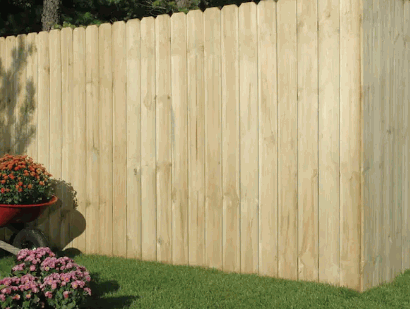
Fir Wood Fence
A fir wood fence is known for its strength and durability, providing a reliable fencing solution for properties. Careful attention to detail during the installation process is crucial to avoid common mistakes and ensure efficient completion within a reasonable time frame.
The key to the strength and longevity of fir wood fences lies in their natural resistance to decay and insect infestation. Proper installation techniques, including precise measurements, using quality materials, and adequate post setting, play a vital role in maximizing the fence’s potential. By addressing common installation errors such as insufficient post depth or improper fastening, the durability of the fence can be significantly enhanced. Mindful planning and adherence to recommended installation procedures can expedite the process, minimizing delays and ensuring a sturdy and attractive fence for years to come.
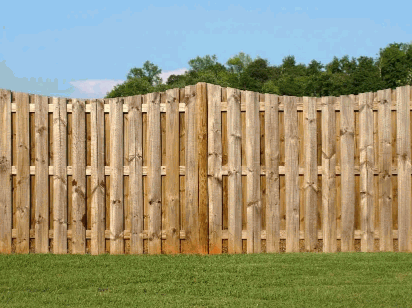
What Are The Benefits Of A Wood Fence?
Wood fences offer numerous benefits, including their aesthetic appeal, durability, versatility, and cost-effectiveness. They are particularly popular as privacy fences, providing an enclosed outdoor space for relaxation and recreational activities while enhancing property aesthetics.
Their natural look and feel create a warm, inviting atmosphere, blending seamlessly with various architectural styles. In comparison to other fence materials, wood requires minimal maintenance, making it an ideal choice for homeowners seeking both privacy and convenience. When properly installed and maintained, wood fences can withstand the elements and provide long-lasting security and privacy. The customizable nature of wood fencing allows for a range of designs and finishes to complement any landscape or outdoor environment.
Aesthetically Pleasing
Wood fences are renowned for their visual appeal and adaptability to various design preferences, offering options such as decorative panels and customizable boundaries for defining property lines and enhancing outdoor aesthetics.
They are a popular choice for homeowners seeking a timeless and natural look for their outdoor spaces. With a wide range of design variations, including picket, privacy, and post-and-rail styles, wood fences cater to diverse tastes and functional needs.
The versatility of wood panels allows for customizations, from lattice tops to scalloped edges, adding a touch of elegance to the overall appearance of the fence.
Besides their aesthetic charm, wood fences play a crucial role in creating privacy and security while seamlessly blending into the surrounding landscape.
Durable
Wood fences have long been admired for their durability and timeless appeal.
The durability of wood fences is heavily dependent on the quality of fence posts, as they bear the brunt of supporting the entire structure. Proper sealing methods play a crucial role in protecting the wood from moisture and pests, prolonging the fence’s lifespan. Sound construction practices, such as ensuring proper alignment and sturdy joinery, are essential for a durable wood fence. By prioritizing these aspects, homeowners can enjoy the long-lasting beauty and functionality of their wood fences for years to come.
Versatile
Wood fences offer versatility, with options for incorporating functional gates and diverse design styles to suit different outdoor fencing needs. Their adaptability makes them suitable for various residential and commercial applications.
Their adaptability makes them suitable for various residential and commercial applications. They can seamlessly blend into a range of outdoor settings, whether it’s a charming cottage garden or a contemporary urban landscape. The availability of different gate styles, such as traditional picket gates or more modern sliding gates, adds to their practicality.
Wood fences also allow for creative design flexibility, enabling homeowners and designers to customize the appearance to match specific architectural themes or aesthetic preferences.
Cost-Effective
Wood fences provide a cost-effective fencing solution, especially when considering DIY installation options and the availability of affordable materials. Their affordability makes them an attractive choice for property owners with budget constraints.
These fences not only offer economical material costs but also the added advantage of DIY installation, reducing labor expenses. With easy-to-follow instructions and readily available tools, homeowners can save significantly on installation costs. The durability and longevity of wood fences make them a wise long-term investment, requiring minimal maintenance over time. By opting for wood fences and DIY installation, property owners can enhance their outdoor spaces while staying within budgetary constraints.
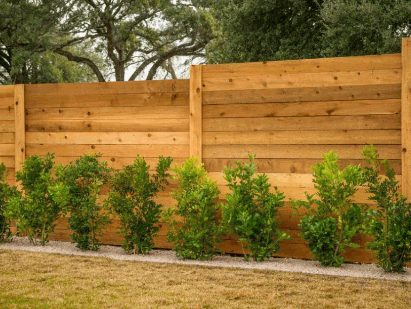
What Are The Steps To Install A Wood Fence?
When installing a wood fence, it’s important to follow a comprehensive process to ensure a sturdy and long-lasting structure.
- Start by determining the property boundaries and obtaining any necessary permits.
- Clear the area of any debris or obstructions to create a clean workspace.
- Proper measurement is crucial to ensure the accurate placement of fence posts.
- Digging post holes at the right depth and distance apart is a critical step.
- When securing the posts, be sure to use a level to ensure they are perfectly upright.
- Attaching the fence panels or boards requires precision and patience.
- Protect the wood with sealant or stain to enhance its durability against the elements.
Determine The Fence Layout
Determining the layout for fence installation is crucial for establishing property boundaries and creating a secure enclosure for the property.
Properly placed fence posts play an integral role in providing structural support and stability to the fence. Design considerations such as the type of fence, its aesthetic appeal, and the overall landscaping of the property should also be considered during the layout determination process.
By ensuring accuracy in the placement of fence posts and aligning the fence with property lines, homeowners can enhance the security, privacy, and visual appeal of their outdoor spaces. This attention to detail helps in creating a well-defined and visually pleasing boundary, while also ensuring the proper functionality and longevity of the fence.
Gather Materials And Tools
When installing a fence, gathering the right materials and tools is crucial for a successful and sturdy installation.
The selection of materials such as wood, vinyl, aluminum, or chain link should take into consideration factors like durability, aesthetics, and maintenance requirements.
Ensuring that the appropriate tools, including post-hole diggers, levels, and power saws, are available is key to a smooth installation process.
Considering the availability of installation equipment such as concrete mixers or nail guns can also streamline the project and ensure a professional finish.
Prepare The Ground
When undertaking any construction or installation project, it is crucial to pay close attention to ground preparation.
Ensuring the site is properly prepared not only contributes to the foundation’s stability but also plays a vital role in safety, compliance with regulations, and accurate property boundaries. By thoroughly assessing the ground conditions, potential hazards can be identified and mitigated, reducing the risk of accidents during and after installation. Adhering to regulations and accurately delineating property boundaries ensures that the installation is secure and compliant, preventing any disputes or issues arising in the future.
Set The Posts
The proper setting of fence posts is crucial for the structural integrity and stability of a wood fence. Various installation techniques are employed to ensure that the posts are securely positioned, especially for fences designed to provide privacy and security.
With privacy being a key consideration, it’s important to dig the post holes to the appropriate depth, often exceeding three feet, to anchor the fence firmly and prevent leaning. Techniques like using gravel at the base of the hole and tamping the soil around the posts aid in stability.
Attaching horizontal support rails to the posts properly distributes the load and reinforces the fence structure, further enhancing its security and durability.
Attach The Rails
Attaching the rails is a critical step in the construction of a wood fence, contributing to its structural framework and resilience. Proper installation of rails is essential, especially for perimeter fences intended to enclose and secure outdoor spaces.
It is imperative that the rails are securely attached to the posts to ensure the stability and strength of the entire fence structure. These rails not only provide support for the pickets or panels but also distribute the weight evenly, reducing the risk of sagging or leaning. The attachment of rails plays a significant role in preventing warping and twisting of the fence over time, ultimately contributing to its long-term durability and aesthetic appeal. Properly attached rails also enhance the overall security and privacy of the enclosed area.
Install The Fence Boards
The installation of fence boards contributes to the visual appeal and functional enclosure of a wood fence. Careful attention to detail is essential, especially when aligning panels to delineate property boundaries and adhere to specific design requirements.
Strategically placing each fence board not only enhances the aesthetic charm of the property but also maintains privacy and security. It’s crucial to ensure that the boards are installed securely and evenly, contributing to the overall durability and stability of the fence. The harmonious alignment of the fence boards plays a significant role in creating a cohesive and polished look for the entire fence structure, adding value and charm to the property.”
Add Finishing Touches
The final step in wood fence installation involves applying finishing touches, such as staining and sealing, to enhance the fence’s durability, visual appeal, and long-term maintenance. Proper care and protective treatments are essential for preserving the wood’s natural beauty and resilience.
These finishing touches not only protect the wood from weather elements, such as rain, UV rays, and insects but also enrich its color and texture, creating a visually striking and inviting outdoor space. Regular maintenance, including cleaning and recoating with stain or sealant as needed, ensures that the wood fence remains strong and attractive for years to come. Consistent care also prevents warping, cracking, and decay, ultimately extending the lifespan of the fence and maintaining its structural integrity.
How To Maintain A Wood Fence?
Maintaining a wood fence involves regular cleaning, periodic staining or painting, repairing damaged boards, and ensuring clear boundaries by trimming plants near the fence line.
These practices are crucial for prolonging the life of the fence.
- Regular cleaning removes dirt and debris that can cause premature aging and deterioration.
- Staining or painting provides a protective barrier against moisture and UV rays, preventing warping and discoloration.
- Repairing damaged boards promptly prevents further structural damage and maintains the fence’s stability.
- Keeping plants trimmed along the boundary line prevents overgrowth that can lead to damage or deterioration of the fence structure.
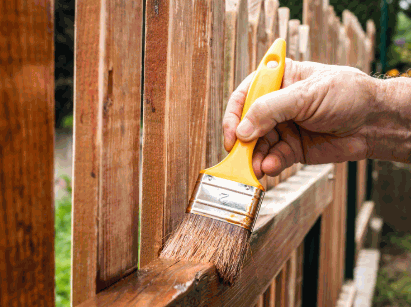
Regular Cleaning
Regular cleaning plays a crucial role in wood fence maintenance, keeping it in top condition and preserving its visual appeal.
This is especially important for privacy fences, as they are more susceptible to dirt, mold, and mildew due to their less exposed nature. By regularly cleaning the fence, homeowners can prevent the accumulation of grime and the growth of damaging organisms that could compromise the fence’s integrity. Regular cleaning can also help maintain the natural color and beauty of the wood, prolonging its lifespan and reducing the need for extensive repairs or replacements.
Staining Or Painting
Staining or painting a wood fence not only enhances its visual appeal but also provides crucial protection against environmental elements and natural wear. Regular staining or painting contributes to the ongoing care and maintenance of the fence.
It forms a protective barrier against moisture, preventing issues such as rot, mold, and warping that can compromise the structural integrity of the wood. The application of stain or paint helps to shield the wood from UV rays, which can cause fading and discoloration over time. This not only preserves the natural beauty of the wood but also extends the lifespan of the fence, reducing the need for costly repairs or replacements. With the right products and maintenance, a stained or painted wood fence can continue to enrich the aesthetics of your property while safeguarding it against the elements.
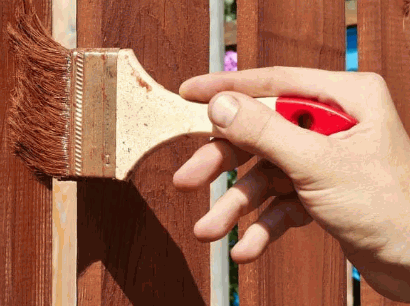
Repairing Damaged Boards
Timely repair of damaged boards is essential for maintaining the structural integrity and visual appeal of a wood fence.
Addressing construction mistakes and rectifying damages ensures the long-term resilience and aesthetic quality of the fence. Neglecting damaged boards can lead to more extensive issues such as rot, weakened support, and increased susceptibility to weather-related damages. By addressing these maintenance needs promptly, homeowners can avoid costly repairs and preserve the overall stability of the fence. Proper maintenance practices also improve the fence’s resistance to environmental factors, extending its lifespan and reducing the need for frequent repairs. Regularly inspecting and repairing damaged boards is pivotal in upholding the functionality and appearance of the structure.
Trimming Plants Near The Fence
Regular trimming of plants near the fence line is crucial for maintaining a clear property boundary and preserving the integrity of a privacy fence. This practice ensures a well-defined and aesthetically pleasing boundary while preventing potential damage to the fence.
By keeping vegetation trimmed, homeowners can prevent overgrowth from encroaching on the fence, which could lead to structural issues. Plant trimming plays a significant role in the overall design of the fence, ensuring that it remains a visually appealing part of the property. Neatly trimmed plants contribute to a sense of order and tidiness, enhancing the overall curb appeal and value of the property.
